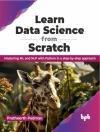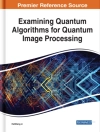Learn how to code for the i Mac, Mac mini, Mac Pro, and Mac Book using Swift, Apple’s hottest programming language.
Fully updated to cover the new Mac Book Touch Bar,
mac OS Programming for Absolute Beginners will not only teach complete programming novices how to write mac OS programs, but it can also help experienced programmers moving to the Mac for the first time. You will learn the principles of programming, how to use Swift and Xcode, and how to combine your knowledge into writing mac OS programs.
If you’ve always wanted to learn coding but felt stymied by the limitation of simplistic programming languages or intimidated by professional but complicated programming languages, then you’ll want to learn Swift. Swift is your gateway to both Mac and i OS app development while being powerful and easy to learn at the same time, and
mac OS Programming for Absolute Beginners is the perfect place to start – add it to your library today.
What You’ll Learn
- Master the basic principles of object-oriented programming
- Use Xcode, the main programming tool used for both mac OS and i OS development
- See what makes Swift unique and powerful as a programming language and why you should learn it
- Create mac OS programs using Swift and Xcode
- Apply interface principles that follow Apple’s Human Interface Guidelines
- Take advantage of the new Touch Bar
Who This Book Is For
People who want to learn programming for the first time and for experienced programmers wanting to learn Xcode and the Mac for the first time.
สารบัญ
Chapter 1: Understanding Programming
Chapter 2: Getting to Know Xcode 8
Chapter 3: The Basics of Creating a Mac Program
Chapter 4: Getting Help
Chapter 5: Learning Swift with Playgrounds
Chapter 6: Manipulating Numbers and Strings
Chapter 7: Making Decisions with Branches
Chapter 8: Repeating Code with Loops
Chapter 9: Storing Code in Functions
Chapter 10: Arrays and Dictionaries
Chapter 11: Tuples, Sets, and Structures
Chapter 12: Defining Custom Types
Chapter 13: Creating Classes and Objects
Chapter 14: Inheritance, Polymorphism, and Extending Classes
Chapter 15: Creating a User Interface
Chapter 16: Working with Views and Storyboards
Chapter 17: Choosing Commands with Buttons
Chapter 18: Making Choices with Radio Buttons, Check Boxes, Date Pickers, and Sliders
Chapter 19: Using Text with Labels, Text Fields, and Combo Boxes
Chapter 20: Designing a User Interface with Constraints
Chapter 21: Using Alerts and Panels
Chapter 22: Creating Pull-down Menus
Chapter 23: Programming the Touch Bar
Chapter 24: Protocol-Oriented Programming
Chapter 25: Defensive Programming
Chapter 26: Simplifying User Interface Design
Chapter 27: Debugging Your Programs
Chapter 28: Planning a Program Before and After Coding
เกี่ยวกับผู้แต่ง
Wallace Wang is a former Windows enthusiast who took one look at Vista and realized that the future of computing belonged to the Mac. He s written more than 40 computer books, including
Microsoft Office for Dummies,
Beginning Programming for Dummies,
Steal This Computer Book,
My New Mac, and
My New i Pad. In addition to programming the Mac and i Phone/i Pad, he also performs stand-up comedy, having appeared on A&E s ‘Evening at the Improv, ‘ and having performed in Las Vegas at the Riviera Comedy Club at the Riviera Hotel & Casino. When he’s not writing computer books or performing stand-up comedy, he also enjoys blogging about screenwriting at his site, The 15 Minute Movie Method, where he shares screenwriting tips with other aspiring screenwriters who all share the goal of breaking into Hollywood.












